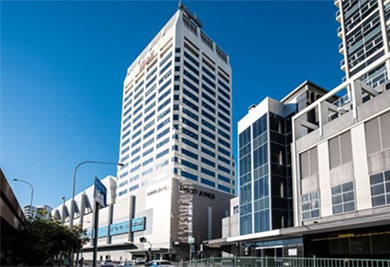Pain at the back of the ankle? Maybe Achilles is to blame!
No, I don’t mean the mythical Achilles of the Greek army who singlehandedly won the Trojan war! I speak of your Achilles tendon (which is appropriately named because that was his downfall).
The Achilles tendon (Calcaneal tendon) is located at the lower third of the lower leg, connecting the calf musculature to the calcaneus, and its sole action is to mediate and transmit load through the ankle joint, which means it grants you the ability to walk, run, jump, swim, row, climb etc. (you get the point). It also holds the official title of ‘The Bodies Thickest Tendon’ which means it can handle some serious weight!
So if this tendon is so strong, how is it that I can be getting pain in my heels?
A complicated question to answer. The reason being; there are so many different causes as to why YOUR heel may be hurting. Is it footwear? Is it your running style? Is it weight? Or maybe your biomechanics? Maybe a combination of all of the above? Is it even Achilles tendonitis?
Lets check: within the Achilles, there lies a hypovascular portion (low blood supply) that sits around 2-6cm above the calcaneus. This is the most common area to experience Achilles tendonitis so if thats where your pain is, we’re (probably) on the right track!
Yes my pain is in that “hypovascular” area, what do I do about it?
Stop doing whatever it is that makes it hurt! (Duh)
All jokes aside, first step is to reduce load and give the Achilles a chance to heal. You may even find some relief in wearing a elevated heel (boots or running shoes). The downside is that it can take 3-6 months for tendons to heal (closer to 6 months for Achilles tendon due to the fact we have to use it to walk daily). Following a period of no pain (3-6 weeks) you then start a progressive strengthening program (issued by a physical therapist or Podiatrist) to increase the tolerance of the Achilles to stress.
The area of concern lies in how persistent Achilles tendonitis is. Not uncommonly, the tendon gets stuck in a state of inflammation and cannot heal, leading to breakdown of tissue and potential rupture requiring surgery. Or pain subsides, only to reoccur when activity increases as the tendon’s repaired fibres weren’t adequately realigned in the rehab period.
Ok so how do I speed up recovery and help prevent reoccurence?

Or shockwave therapy for short. Shockwave Therapy is a sound wave therapy, where a pneumatic head sends a sound-wave into the body tissue. The tissue then responds by releasing healing factors, increasing blood supply, and inhibiting pain receptors (to name a few). All of these are desired outcomes in treating and managing Achilles tendonitis and when used in the hands of a skill practitioner, can greatly increase healing time and result in better outcomes!
At Podiatry First, all clinicians are trained and highly proficient in the treatment of Achilles tendonitis and Shockwave Therapy. Please bare in mind that your condition may require more intervention than simply reducing activity, and I encourage you to seek out the help of a qualified practitioner to get down the root cause of YOUR problem.
Thank you for reading!
Leave a reply



I appreciate the practical tips and advice you’ve shared in your post. They provide actionable steps for readers to follow. For more information, <a href="https://c67c6qc81l106w3glj0z2-zcz6.hop.clickbank.net" target="_blank">click here</a>.
Reply